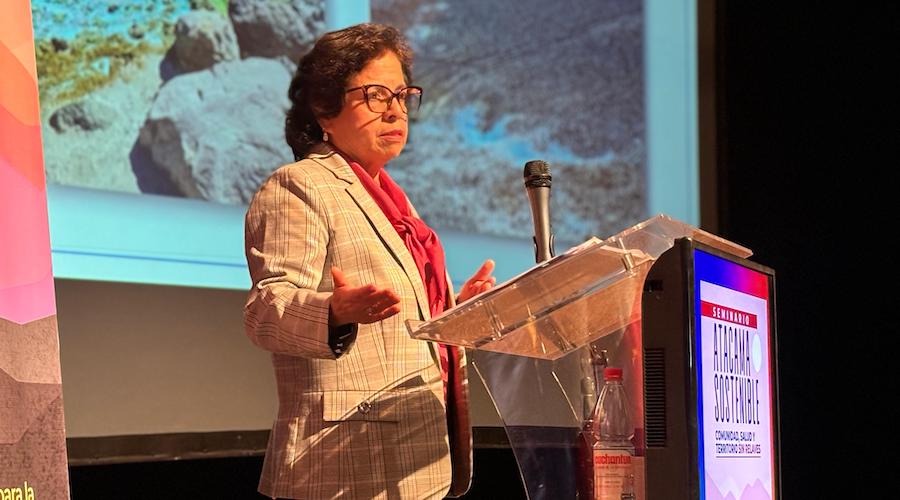Canadian diamond exploration perks up

The high-risk nature of diamond exploration, the failure to find new world-class deposits during the past two decades, and the expense of arctic exploration – not to mention the cratering of rough diamond prices by roughly 50% during the financial crisis — all drove companies and investors away.
But now, spurred by several successful diamond development and exploration projects in Canada, relatively firm rough diamond prices compared to gold, and a lack of future supply of the gems, several exploration companies have been staking new land and getting ready to launch modest exploration programs.
“The whole diamond market has turned around,” says Randy Turner, president and CEO of Canterra Minerals (TSXV: CTM).
“There are lots of published papers on the supply/demand curve, but there certainly has been a lack of exploration. With gold prices remaining where they are and a pullback in that sector, I think we’re going to see some dollars going into the diamonds – and those will be from funds and individuals that did very well and understood it from the ‘90s.”
Turner was one of those individuals, having been part of Canada’s original diamond rush, which started in 1991. He led Winspear Resources, which discovered the Snap Lake diamond deposit in 1997, and was acquired by De Beers in 2000.
A successor company to Winspear, Canterra announced in April that it is returning to its Northwest Territories diamond exploration properties staked in 2000. It’s also expanded those concessions and added targeted new projects to its portfolio based on a proprietary database compiled over 15 years of exploration work in the Southern Slave Province.
The database is key to its exploration plans this year, which will start in July and include more detailed sampling and mag/EM surveys.
“The six land packages that we have — unlike back in the ‘90s when we went out and staked huge blocks of land — we are now very target-specific because we’ve been able to narrow it down based on mineral trains and airborne geophysics,” Turner says.
Canterra will aim will be to outline drill targets for 2015, focusing its efforts on its Hilltop property, 45 km south of Snap Lake, and Merlin, which is 20 km northwest of Gahcho Kué, the De Beers–Mountain Province Diamonds’ (TSX: MPV; NYSE-MKT: MDM) joint venture that is under construction.
The company also plans to make further land acquisitions.
Turner says he and the Canterra board, which is comprised of directors with deep diamond expertise, decided on the turn back to diamonds about six months ago based on industry trends, including the winding down of some of the bigger mines.
“It’s just one of those things – you’re looking at where the next cycle is going to come from and I would say that the diamond cycle is going to be happening for the next couple of years,” said Turner, whose Silver Quest Resources was bought out by New Gold (TSX: NGD) in 2011 for its 25% stake in the Davidson gold-silver property in B.C. (part of New Gold’s Blackwater project).
Canterra isn’t the only junior that sees potential in diamonds.Margaret Lake Diamonds (TSXV: DIA), a new company that started trading in April, has also picked up land near Gahcho Kué and Kennady North, Kennady Diamonds‘ (TSXV: KDI) exploration project next door to the development.
Margaret Lake has an option to earn up to 70% of a 197-sq.-km land package adjoining Kennady North to the north and west.
The junior managed to raise $1.2 million in a private placement and has a $1-million exploration program planned for 2014. Targets identified through an airborne gravity/mag survey in May and follow-up bathymetry work on underwater gravity anomalies will be drilled later this summer.
The Margaret Lake property has seen limited work, including till sampling and geophysics, but no exploration has been conducted on Margaret Lake since 2003, and no kimberlites have yet been identified. The project hosts untested or unresolved kimberlite indicator mineral trains and poorly identified geophysical anamolies.
Margaret Lake can earn a 60% interest in the project by spending $1 million on exploration by Oct. 13 and up to 70% by spending another $1 million by Oct. 13, 2015. The company is led by president and CEO Paul Brockington and vice-president exploration Buddy Doyle, who played a key part in the Diavik discovery.
Meanwhile, micro-cap Strike Graphite (TSXV: SRK) announced in May that it struck a deal to acquire 80% of two land packages totalling 5,424 sq. km in the Sask Craton near North Arrow Minerals’ (TSXV: NAR) and Stornoway Diamond’s Pikoo joint venture in Saskatchewan.
North Arrow discovered a new kimberlite field at Pikoo last year, with a 209.7-kg sample from the PK150 kimberlite returning 23 commercial-size diamonds (larger than the 0.85-mm sieve size).
While investor interest has started to return for diamond development projects like Stornoway’s and for select exploration plays such as Kennady Diamonds and North Arrow, investors are not yet throwing money at early stage exploration. Margaret Lake was able to raise enough cash for a work program ($1.2 million), and Canterra announced a $2-million financing in late May that is still open and should close before the end of June.
More News
Chile Minister says copper could find support at $3.9/lb
Mining Minister Williams said metal prices will largely depend on evolving trade tensions between the U.S., China, and the EU.
April 07, 2025 | 06:45 am
China deploys rare earths as weapon in trade war with Trump
Beijing said Friday it will tighten controls on exports of seven types of rare earths.
April 07, 2025 | 06:22 am
Ukrainian team to travel to US this week to discuss minerals deal, Ukrainian source says
The Trump administration has proposed a broader minerals deal, which Ukraine has been reviewing recently.
April 07, 2025 | 06:16 am
{{ commodity.name }}
{{ post.title }}
{{ post.excerpt }}
{{ post.date }}




Comments